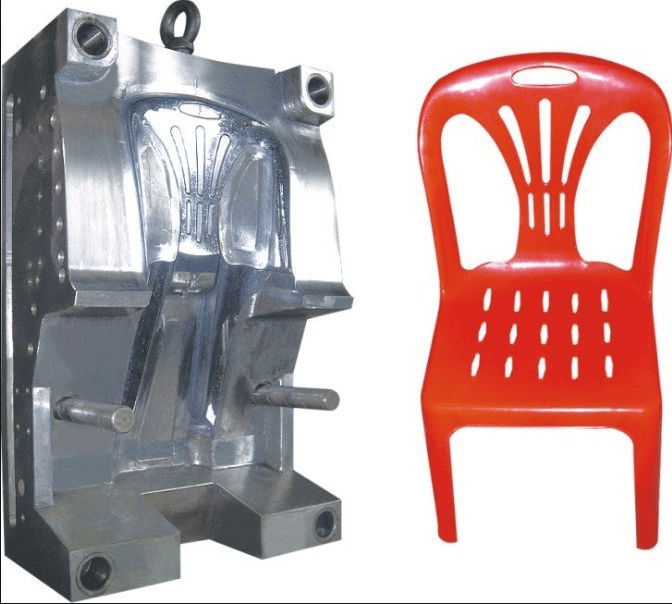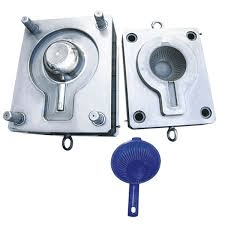Mold is a critical element behind the longevity of your products

Injection molding is actually the most popular method for creating identical plastic products in high volumes. But for getting high-quality and cost-effective plastic production, plastic molds play a vital role in injection molding.
Moreover, mold along with all other important tools is a critical element behind the success and longevity of your products. In fact, molds and other tools have great importance in injection molding.
Since the condition of your injection mold affects the quality of the plastic components so you should deeply examine mold quality and performance. We are here to explore, what are the 4 ideal materials for designing molds?
In addition, you will learn, why are plastic molds so expensive to manufacture? Let’s examine whether 3D printing cheaper than molding or not?
What is plastic mold?
A plastic mold is an essential part of injection molding. Basically, it is a hollow block that is used to fill with a pliable or liquid material such as:
- plastic
- metal
- glass
- as well as ceramic raw material.
Inside a mold, this liquid material cools and adopts the shape of the mold. Generally, a mold is a counterpart to a cast.
Is it spelled mould or mold?
Actually, mold is an American spelling for the word mold. While mould is only the British version of the word mold. Basically, both words have similar meanings and contexts.
What are plastic molds made from?
Mold manufacturers use different materials to make mols for plastic molding. Further, the most common and ideal materials for making molds are:
- Hardened steel
- aluminum
- alloys
- copper, etc.
As we have already described that a plastic mold is a highly important part of injection molding so always select the ideal material. In fact, steel molds are more costly but manufacturers greatly prefer them as they have high durability.
Additionally, hardened steel molds are more superior because of their better wear resistance and lifespan.
How do you make a plastic injection mold?
In the first step, we will design the mold according to the following factors such as,
- 3D data
- material character
- the requirements of your production.
Basically, a mold consists of two halves a fixed half (cavity side) and the second is a moveable half (core side). The core side moves forth and back in order to control the opening and closing of the mold.
Once, you have set what your parts should be now it is time for the tool designer to go and create the plastic mold according to your needs.
Actually, there are several factors that that your designer will consider and decide how your mold will look like. These factors are:
- Part size
- Part complexity
- No of cavities
- mold metal, etc.
Moreover, all the above factors greatly impact the cost of your mold and the quality of your molded products. Once, you have discussed and finalized the whole design, it is time for creating the final mold tool.
Your reliable designer will make it according to your instructions. But make sure your designing company can offer offshore tooling as well. So that you can avoid all upcoming hassles and disturbances.
How much does it cost to make a plastic mold?
The cost of making plastic molds depend on the combination of your part size, material, complexity, and anticipated quantities.
Hence, if you want to construct a mold with 1,000 washers per year, then a single cavity mold will be highly suitable for you. It has the capability to make one washer per machine cycle. So, its price will be $1,000-2,000.
While on regular basis, a small, single cavity plastic injection mold generally costs from $1,000-$5,000. On the other hand, the cost of complex or larger molds is $80,000 or maybe more than it. If we check their average cost, then its cost will be up to $12,000.
Why are plastic molds so expensive?
There are two facts behind the high-cost of plastic molds. Its expensive materials and the complexity of its design.
Let's talk about both of these such as:
Expensive material:
Basically, an injection mold has to subject thousands of pounds of pressure with every cycle. Hence, a mold should be created using very strong materials so that it can withstand repeated use without deforming.
One of the ideal choices for creating injection mold is steel (steel is a costly metal).
Complex designs:
There is another factor for the higher costs such as the complexity of the part that you want to mold. In fact, the more complex your part, the more complicated and costly the plastic mold will be.
Is 3D printing cheaper than molding?
In fact, it depends on your requirements because injection molding is cheaper in comparison to 3D printing. But only if you will produce more than 100 parts. On the other hand, the cost per unit by using 3D printing will stay relatively unchanged.
How much does a professional 3D printer cost?
Reliable professional 3D printers can charge from $200 – $500. But some of them can be more expensive such as $1500.
Moreover, the higher-end 3D printers, like Enthusiast 3D printers and Professional 3D printers can charge from $1,500– $6,000. Generally, it depends on the capabilities of the printer.
Will 3D printing replace injection molding?
In fact, 3D printing can never replace injection molding. Basically, in molding, manufacturers always use a highly specialized machine. So, injection molding has the ideal capability of producing products faster, more efficiently.
These products always have better dimensional accuracy by using perfect plastic molds in comparison to 3D printers.
Actually, injection molding is a time-tested manufacturing process. This technique is producing objects in custom shapes and sizes for over a century. Hence, it is more reliable than 3D printing.
Can I mold plastic at home?
It sounds good if you are going to mold plastic at home. However, molding plastic is great fun. It is a very cost-efficient way to produce unique pieces or replicas of your favorite plastic items.
If you are going to produce your favorite objects at home, first of all, you will purchase a mold. You can even make your own custom plastic mold using reusable molding materials, plaster, or, silicone.
Now you will cast your mold with molten material. Wait for its cooling and setting in the mold. In the last step, you will have to remove the mold carefully in order to achieve your final plastic product.
So, with the help of a mold, you can easily make your desired plastic shapes even at home. But be careful because all the process needs high accuracy for getting perfect plastic parts.

Conclusion:
Producing plastic products using injection molding is more cost-effective. This process makes use of hybrid techniques to produce high quality, yet low volume components.
Moreover, good quality plastic molds play a vital role in creating highly efficient plastic products. In injection molding, you can use a wide variety of materials to create products.
Furthermore, you can also use multiple plastic materials simultaneously to design high-end products. For example, you can easily over-mold TPE onto PP parts.
One of the major advantages of injection molding is that you can produce thousands of parts before maintaining the tools for your next production.





